Over 40? If You Can Complete These 8 Flexibility Moves, Your Body Is Decades Younger
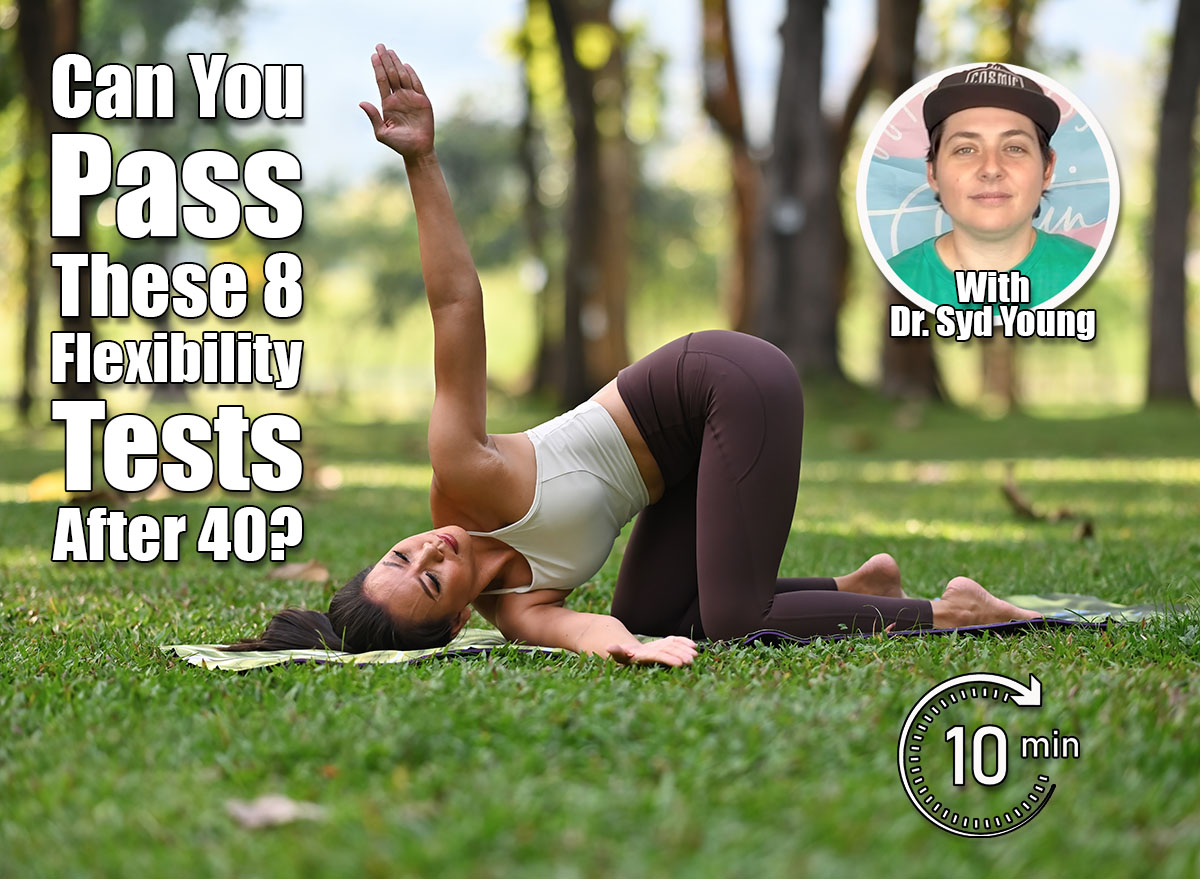
Flexibility serves as a key indicator of your “biological age” and functional fitness. According to Dr. Syd Young, owner and physical therapist at OutWellness, flexibility—especially in the lower body—has been linked to better mobility, enhanced mental wellness, and less of a reliance on caregivers as you age. That’s why we chatted with the experts who share eight flexibility moves that signal your body’s decades younger after 40.
As you age—even if you lead an active lifestyle—mobility typically declines. This is caused by the natural stiffening of joint capsules and tendons, along with shifts in muscle, cartilage, collagen, and connective tissue, says Dr. Amani Taylor, DPT at FYZICAL Therapy & Balance Centers – Affton.
“When flexibility decreases, it becomes harder to maintain the strength, balance, and endurance needed for daily tasks. This can lead to a loss of independence, reduced quality of life, and greater risk of hospitalization,” Taylor adds. “Consistent mobility drills help maintain joint health, keep the body moving through its full range, and support all other aspects of movement.”
Mobility exercises soothe your joint tissues by boosting circulation and synovial fluid flow. “This prevents stiffness and promotes a healthy range of motion and recovery as we age,” Dr. Young explains.
Keep in mind that flexibility doesn’t simply mean being “fit.” Rather, “it’s about preserving your body’s ability to move freely, safely, and confidently as you age,” Dr. Young says.
Below, we have six flexibility moves that reveal whether your body’s decades younger. They provide essential insight into your strength, mobility, coordination, and balance.
Sit-And-Reach Test
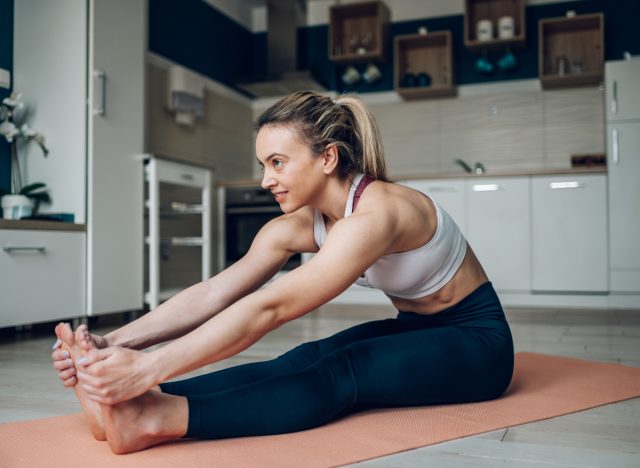
“This classic test measures hamstring and lower back flexibility,” Dr. Young notes. “Limited range here is associated with greater risk of low back pain, impaired gait, and fall risk in older adults.”
- Begin seated on the floor with your legs extended.
- Reach your hands toward your toes.
Chair Sit-And-Reach
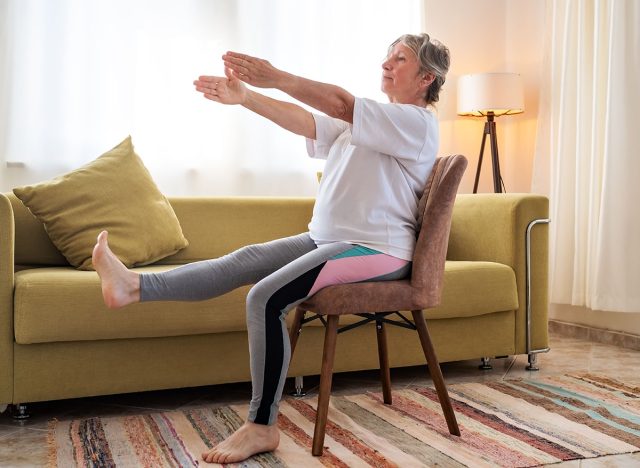
“A seated version of the sit-and-reach, this test is especially useful for older adults and can signal early mobility limitations or joint stiffness,” Dr. Young tells us.
- Begin seated at the edge of a sturdy chair.
- Extend one leg straight out in front of you, heel planted on the floor and toes pointing upward.
- Keep the other foot flat on the ground.
- Place one hand on top of the other as you extend your arms and reach forward toward the foot of your extended leg.
- Maintain a straight back.
- Repeat on the other side.
Back Scratch Test
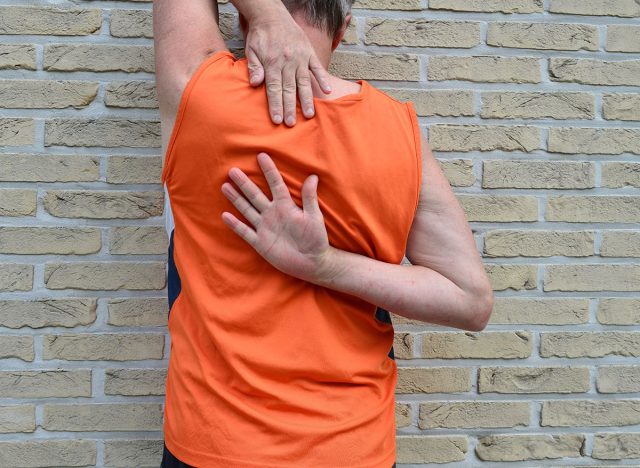
“This shoulder mobility assessment reflects upper-body flexibility,” Dr. Young explains. “Limited motion can impact daily tasks like dressing and reaching. It’s a core part of senior fitness testing protocols.”
- Stand tall, feet hip-width apart.
- Reach one arm overhead, bend that elbow, and try to touch your upper back.
- At the same time, reach your opposite arm up and behind your back, attempting to touch or overlap your fingertips.
- Switch sides.
Sitting-Rising Test
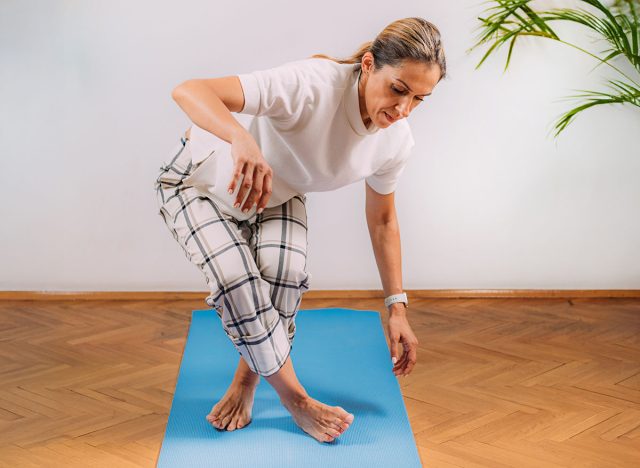
- Begin seated cross-legged on the floor.
- Try to stand up without using your hands or knees for support.
- Begin with 10 pounds—each time you use support, deduct a point.
Deep Squat
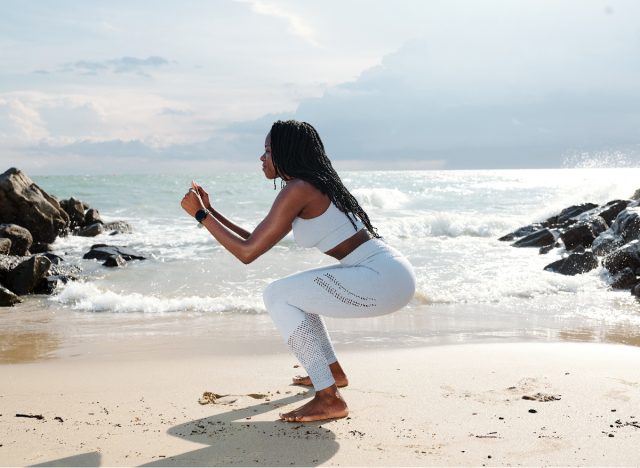
“This move reflects ankle, hip, and spinal mobility,” Dr. Young points out. “If you can perform a controlled deep squat (heels down, chest up), it’s a strong marker of overall mobility and functional aging.”
- Stand tall with your feet shoulder-width apart.
- Bend your knees and squat as low as you’re comfortably able to, keeping your chest tall and heels down.
The Thomas Test
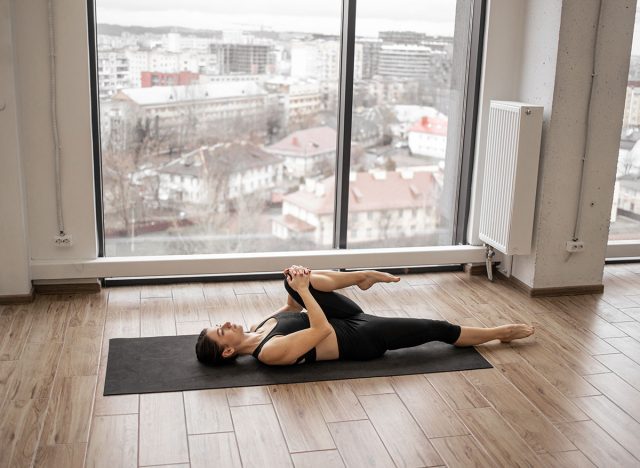
“If the resting leg lifts during this exercise, that indicates tightness in the hip flexors, which directly impact hip and lower back mobility,” Dr. Young says.
- Lie flat on your back.
- See how far you’re able to pull your knee toward your chest while the opposite leg stays rested.
- Repeat on the other side.
Cat-Cow
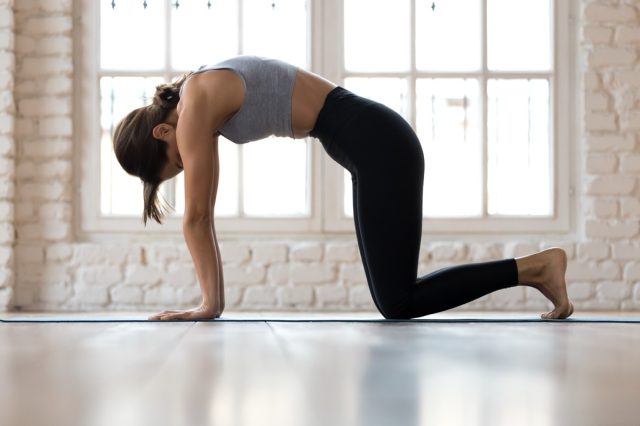
- Assume a tabletop position on your hands and knees.
- For cow pose, breathe in, drop your belly toward the floor, concave your back, and gaze upward.
- For cat pose, breathe out, round your back, tuck your chin in toward your chest, and tuck your tailbone.
Thread the Needle
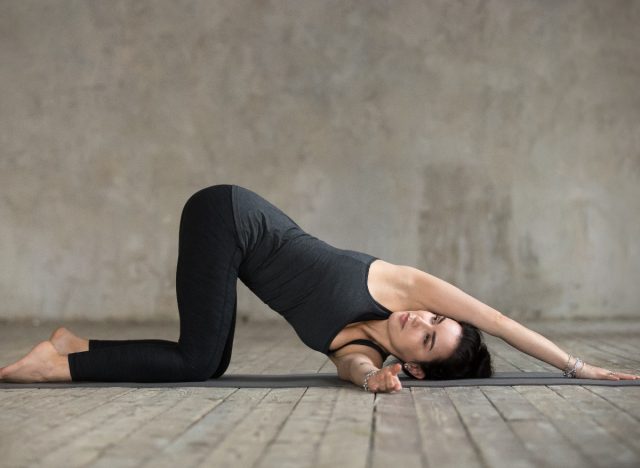
- Assume a tabletop position on your hands and knees.
- Breathe in as you reach your right arm toward the sky.
- Keep your left hand pressed firmly into the floor.
- Exhale as you reach your right arm under your left arm.
- Rest your right shoulder and ear on the workout mat.
- Gaze toward the left.
- Hold for 10 to 20 full deep rounds of breath.
- Repeat on the left side.